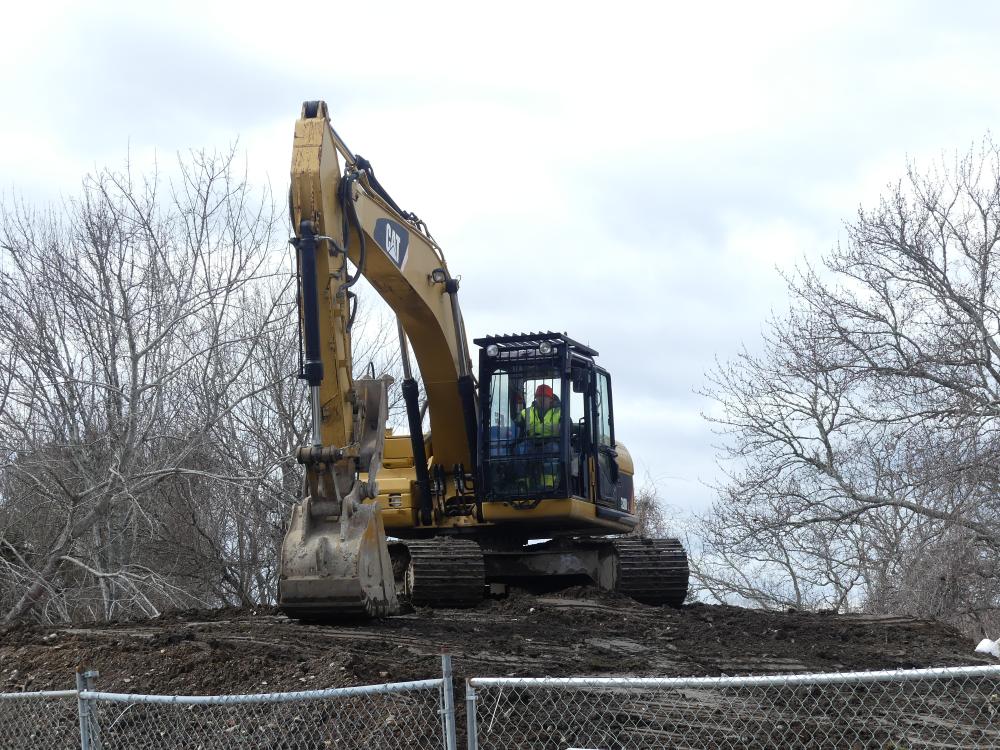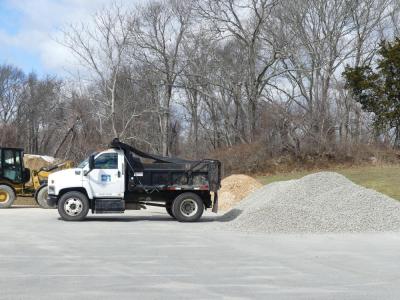Ten more properties to be restored in EPA Bliss Corner cleanup
Since receiving permission to set up its staging site at the old police station, the U.S. Environmental Protection Agency has steadily made progress in cleaning up the Bliss Corner neighborhood, where contaminants were identified in the soil. Ten properties from the area are now on the EPA’s radar for contaminant removal.
The clean-up, which began summer 2022, is the result of years of investigation.
Contaminants were first identified in the neighborhood during the demolition and replacement of a single-family home on McCabe Street in 2018. That same year, the state began looking into reports of historic dumping in the neighborhood dating back to the 1950s.
After confirming that the soil was contaminated with dangerously high levels of lead and polychlorinated biphenyls — also known as PCBs — the agency approved a plan to remove the contaminated soil from five properties which exceeded the agency’s “removal management level.” Each of the homes are currently occupied.
So far, the EPA has cleaned up six properties. This third “phase” will include five residential properties and one commercial and the next phase already plans to address another four properties, according to Cayla Jimenez, the back up on-scene coordinator for this project.
“As we work in the state, more and more folks have requested sampling and so more and more sites have samples that indicate that the concentrations are high enough to really do work,” Jimenez said.
She explained that the cleanup is being completed in smaller “phases” as they fall under the EPA’s short-term cleanups removal program. As properties with contaminants are identified, action memorandums are issued that detail the restoration plan and authorizes funding.
Samples are taken by the EPA at the request of residents, but can also be taken by the state. Jimenez emphasized the association’s partnership with the state throughout the process.
At each cleanup site, the removal of soil depends on the location’s test results — some properties only need a partial restoration.
Contaminated soil is brought to the staging site and clean fill is placed back on the properties with a layer of gravel.
Aaron Shaheen, community involvement coordinator for the EPA’s Office of Public Affairs, said the work to clean up a property can be a bit “intrusive,” so the EPA works closely with homeowners to ensure they are happy throughout the process.
Jimenez said when they first get to a property, everything is inventoried and the EPA can replace anything up to what was existing. She added the association is trying to be as accommodating as possible and will even help with additional landscaping issues at the property if they don’t cost too much and are going to be disrupted by the cleanup.
For example, she said if the homeowner had a pool that needed to be removed for the cleanup, the EPA will then replace it.
“So for trees, shrubs, landscaping — we try to put everything back and we can change it up,” Jimenez said. “If they have blueberry bushes and they want blackberry bushes — that's not a problem.”
At one of the properties, a shed needed to be moved to remove the contaminated soil underneath it, when the shed was returned, the crew noticed one of the doors coming off its hinges and was able to fix that for the homeowner.
The testing truck is available at the staging site once again, expediting that part of the cleanup, according to Shaheen.


















